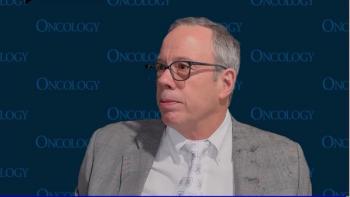
Shaji Kumar, MD, Details Toxicities With Daratumumab Plus Lenalidomide/Dexamethasone in Frontline MM
At EHA 2021, Shaji Kumar, MD, reviews the toxicity profile of daratumumab plus lenalidomide and dexamethasone for patients with transplant-ineligible multiple myeloma in the first-line setting.
CancerNetwork® sat down with Shaji Kumar, MD, of the Mayo Clinic, at the 2021 European Hematology Association (EHA) Congress to talk about long-term toxicities associated with daratumumab (Darzalex) plus lenalidomide (Revlimid) and dexamethasone in newly diagnosed multiple myeloma, and how there were no new safety signals detected at the 5-year follow-up to the phase 3 MAIA trial (NCT02252172).
Transcript:
Given the fact that daratumumab is a new drug, [the toxicity profile] is an area that everyone [questioned.] Are their long-term toxicities associated with this? Patients have been on therapy for long periods of time now [and] there were no new safety signals. There were no cumulative toxicities that were observed with daratumumab plus lenalidomide, and dexamethasone compared with lenalidomide/dexamethasone. There are certainly hematological toxicities that we saw before. There’s certainly more neutropenia with the [daratumumab] combination, and that is to be expected based on what we have seen before. [There’s] more lymphopenia as well, but nothing that appears to be new with the longer duration of therapy.
Reference
Theirry F, Kumar S, Torben P, et al. Overall survival results with daratumumab, Lenalidomide, and dexamethasone versus lenalidomide and dexamethasone in transplant-ineligible newly diagnosed multiple myeloma: phase 3 MAIA study. Presented at: 2021 European Hematology Association Annual Meeting; June 9-17, 2021; Virtual; Abstract LB1901. Accessed June 29, 2021. https://bit.ly/3hmf7l9
Newsletter
Stay up to date on recent advances in the multidisciplinary approach to cancer.

















































































